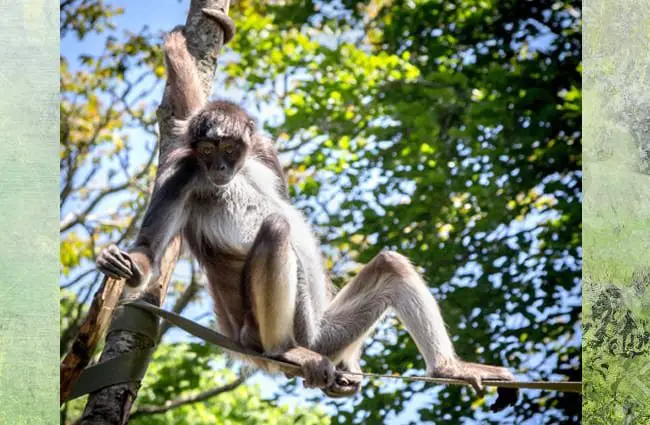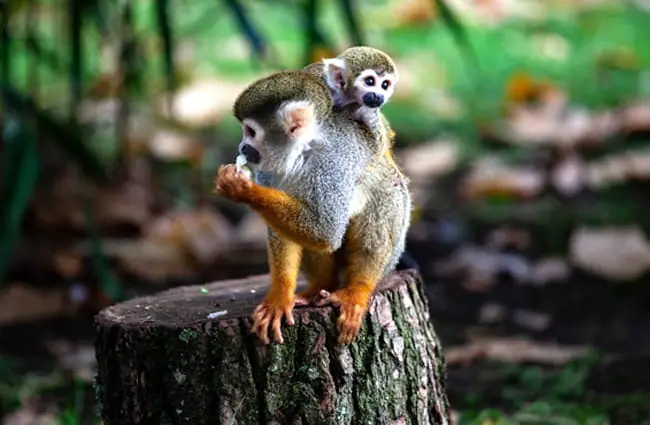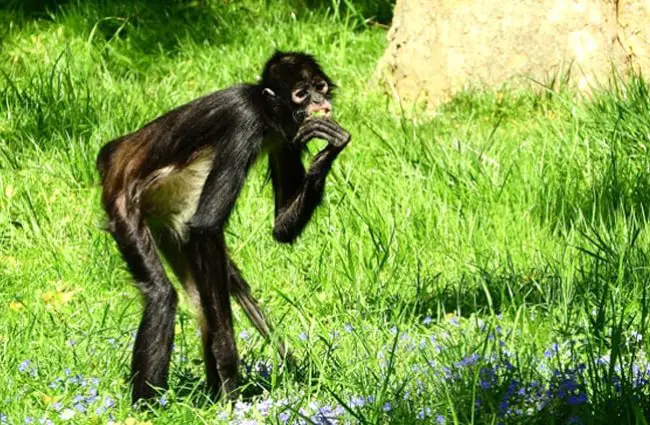The rainforests of Central and South America resonate with the agile movements of a remarkable primate and the spider monkey. These captivating creatures, aptly named for their long limbs and penchant for brachiation and swinging through the trees, are a vital component of their ecosystem and a source of fascination for scientists and nature enthusiasts alike.

Spider Monkey Basics: An Overview
Spider monkeys belong to the genus Ateles, encompassing seven distinct species. They are New World monkeys, meaning they originate from the Americas. Characterized by their relatively small bodies and exceptionally long limbs, they are masters of arboreal locomotion. Their prehensile tail, acting as a fifth limb, further enhances their climbing and swinging abilities. Spider monkeys exhibit sexual dimorphism, with males generally larger than females.
Physical Characteristics
The most striking feature of the spider monkey is undoubtedly its anatomy. Their long, slender bodies, coupled with elongated limbs, allow them to navigate the forest canopy with remarkable speed and grace. The prehensile tail, devoid of fur on its underside, provides a secure grip on branches. Their hands and feet are adapted for grasping, with opposable thumbs and toes. Their faces are typically dark, often with a pale patch around the mouth.
Habitat and Distribution
Spider monkeys primarily inhabit tropical rainforests, ranging from southern Mexico to the Amazon basin. They prefer undisturbed primary forests with tall trees and abundant fruit, but can also be found in secondary forests and gallery forests. Their distribution varies depending on the species, with some confined to specific regions. They are canopy dwellers, rarely descending to the forest floor.
Diet and Feeding Behavior
Spider monkeys are primarily frugivores, meaning their diet consists largely of fruit. However, they are opportunistic feeders and will also consume leaves, flowers, buds, insects, and occasionally small vertebrates. They are known for selectively feeding on ripe fruits, playing a crucial role in seed dispersal. Their foraging behavior often involves traveling long distances in search of food sources.

Seed Dispersal and Ecological Role
Spider monkeys are incredibly important for maintaining forest health. By consuming fruits and dispersing the seeds through their feces, they contribute significantly to forest regeneration and biodiversity. Their selective feeding habits also influence plant community structure. A healthy spider monkey population is an indicator of a thriving rainforest ecosystem.
Social Structure and Behavior
Spider monkeys live in fission‑fusion communities, characterized by flexible group sizes and composition. Groups typically consist of several adult males and females, along with their offspring. Individuals frequently split off into smaller subgroups to forage, then rejoin the larger community at night. This social structure allows for efficient resource utilization and minimizes competition. Communication occurs through a variety of vocalizations, facial expressions, and body language.
Communication and Vocalizations
Spider monkeys have a complex repertoire of vocalizations, used for a variety of purposes, including alarm calls, contact calls, and dominance displays. They also use facial expressions and body postures to communicate their intentions and emotions. Grooming is an important social activity, strengthening bonds and reinforcing social hierarchies.
Reproduction and Life Cycle
Spider monkeys typically reach sexual maturity between five and eight years of age. Females usually give birth to a single infant after a gestation period of around seven to eight months. Infants are highly dependent on their mothers, clinging to their fur and nursing for several months. Young spider monkeys gradually learn foraging skills and social behaviors from their mothers and other group members. The lifespan of spider monkeys in the wild is estimated to be around 20 to 30 years.

Mating and Parental Care
Spider monkey mating is not strictly seasonal. Males will actively seek out receptive females. Following birth, the mother provides extensive care, carrying and nursing her infant for an extended period. Young monkeys undergo a lengthy period of learning, observing, and imitating their mothers’ foraging and social skills.
Spider Monkeys and Humans
Historically, spider monkeys have been hunted for food and their fur. Today, the primary threats to their survival are habitat loss due to deforestation, fragmentation, and agricultural expansion. They are also impacted by the illegal pet trade. Many spider monkey populations are now considered vulnerable or endangered.
Conservation Efforts
Numerous conservation organizations are working to protect spider monkeys and their habitat. These efforts include habitat restoration, anti‑poaching patrols, and community education programs. Sustainable forestry practices and responsible agricultural development are also crucial for ensuring the long‑term survival of these remarkable primates. Supporting these organizations and advocating for responsible environmental policies can make a significant difference.

Advanced Insights for Aspiring Zoologists & Researchers
The genus Ateles presents numerous research opportunities. Phylogenetic studies continue to refine our understanding of their evolutionary relationships within the primate order. Behavioral ecologists are investigating the complexities of their fission‑fusion social structure and foraging strategies. The impact of habitat fragmentation on their genetic diversity and population viability is another critical research area. Furthermore, studies on their cognitive abilities, particularly their problem‑solving skills and tool use, are shedding light on their intelligence.
Zookeeper Considerations
Caring for spider monkeys in captivity requires a deep understanding of their complex needs. Enclosures must be spacious and provide ample opportunities for climbing, swinging, and foraging. A varied diet, rich in fruits, vegetables, and enrichment items, is essential for their physical and psychological well‑being. Social housing is crucial, but careful attention must be paid to group dynamics and compatibility. Regular veterinary care, including parasite control and dental hygiene, is also vital.
Encountering Spider Monkeys in the Wild: A Guide
If you are fortunate enough to encounter spider monkeys in their natural habitat, observe them from a respectful distance. Avoid making direct eye contact, as this can be perceived as a threat. Do not offer them food, as this can alter their natural foraging behavior and make them dependent on humans. Report any sightings to local conservation authorities.

Spider monkeys are a vital part of the rainforest ecosystem and a testament to the beauty and diversity of the natural world. By understanding their biology, behavior, and conservation needs, we can ensure their survival for generations to come. Their agile movements, complex social interactions, and crucial ecological role make them a captivating subject of study and a symbol of the rainforest’s fragility.

![Red Angus Closeup of a beautiful Red Angus cowPhoto by: U.S. Department of Agriculture [pubic domain]https://creativecommons.org/licenses/by/2.0/](https://animals.net/wp-content/uploads/2020/03/Red-Angus-4-238x178.jpg)




![Red Angus Closeup of a beautiful Red Angus cowPhoto by: U.S. Department of Agriculture [pubic domain]https://creativecommons.org/licenses/by/2.0/](https://animals.net/wp-content/uploads/2020/03/Red-Angus-4-100x75.jpg)

